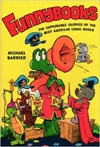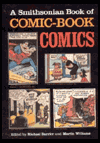
Essays
This section is set aside for pieces that are typically longer than those in the Commentary section and that aren't anchored to particular new books or films.
Bob Clampett and "Tarzantoons"
A Day in the Life: MGM, March 4, 1953
Oskar Lebeck, John Stanley & Friends
Roger Armstrong Remembers Life at Lantz, 1944-45
"The Mysterious Dumbo Roll-A-Book" considers just how it was that Dumbo came to be made as a Disney feature.
"A Day in the Life: Disney, June 12, 1935," the seventh photo essay on the "day in the life" theme, describes the day Walt, Lillian, Roy, and Edna Disney arrived in England on the first leg of their grand tour of Europe.
"Walt's Adventures in the Ivy League" recounts the events surrounding the two days in June 1938 when Walt Disney received honorary degrees from Harvard and Yale Universities.
"A Day in the Life: Disney 1931," the sixth photo essay on the "day in the life" theme, takes you inside the Disney studio's "music rooms."
Walt Disney's father, Elias, wrote a "Biography of the Disney Family in Canada" many years ago, and you can read it here.
"A Day in the Life: Disney, June 20, 1938" is the fifth photo essay on the "day in the life" theme, this one devoted to Walt Disney's arrival in New York on an auspicious day.
"From 1992: On the Jones-Avery Letter" reprints my piece from APAtoons about the famous 1975 letter by Chuck Jones (with annotations by Tex Avery) and the circumstances surrounding it.
"Two Days in the Life: Kansas City, 1922" is the fourth photo essay on the "day in the life" theme, this one made up of five gag photos of Walt Disney and his early collaborators.
"A Day in the Life: Disney, January 1930" is the third such photo essay, eight photos showing the Disney staff just before Ub Iwerks and Carl Stalling left.
"A Day in the Life; Walt Kelly, 1955," the second such photo essay, shows the great Pogo cartoonist in eight gag photos distributed by his syndicate at the peak of his popularity.
"A Day in the Life: Disney, February 1927" is the first in a series of photo essays that will be made up of several photos taken at a cartoon studio on the same day. This first installment shows three photos of the Disney staff taken in February 1927.
In "Accentuating the Negative," I consider some of the complaints lodged against my writing.
"What Would Bob Do?" examines why some of Bob Clampett's cartoons may be more impressive as parts than as wholes.
"The World's Richest Duck" explains what made Carl Barks's first issue of Uncle Scrooge (1952) a comic-book masterpiece. I originally submitted this essay, unsuccessfully, to the Wall Street Journal as a potential entry in its weekly "Masterpiece" series devoted to monuments of art, music, literature, and architecture.
For a glimpse of what it was like to write and draw Looney Tunes and Merrie Melodies Comics in 1948, visit "A 'Golden Age' Comic Book Script."
"Where Walt Was: Honolulu, August 1934" is the first full, documented account of Walt and Lillian Disney's triumphant visit to the Hawaiian islands.
I attended the Ottawa International Animation Festival in September 2007 and reported on what I saw in "My Journey to the Great White North."
More than forty years after his death, librarians still seem to have it in for Walt Disney, as I explain in "Walt and the Librarians."
Did or did not Walt Disney wear a Goldwater button when President Johnson awarded him the Medal of Freedom in 1964? The answer is here, in "Walt's Goldwater Button: The Last Word, Maybe."
Diane Disney Miller, Walt's daughter, has shared with me her decidedly negative opinion of Neal Gabler's biography of her father.
The great Disney animator Norman Ferguson is the subject of two essays, one on "Fergy Ruffs" and the other on his famous flypaper sequence.
Donald Draganski writes about Paul Hindemith's visit to the Disney studio and his encounters with Walt and Leopold Stokowski.
Bill Benzon and I have exchanged ideas about just what the animal actors in Fantasia's "Dance of the Hours" are up to. Bill's ideas have also been the impetus for a page about Fantasia called " Uncle Walt and the Sacred."
Milton Gray, my indispensable collaborator in the research for Hollywood Cartoons: American Animation in Its Golden Age, has contributed two guest essays, one on Bob Clampett, the other on Clampett's great cartoon Coal Black and de Sebben Dwarfs.
I've posted two photo essays on Walt Disney's Missouri, one on Disney-related sites in Kansas City, the other on Marceline.
"A Few Thoughts About Interviews" is concerned with the value of interviews about Walt Disney, in particular.
John Fawcett's Maine museum is devoted to comic-art and animation-related treasures from the thirties, forties, and fifties.
I've posted a journal based on my trip to Europe in June 2004. The first installment is devoted to Disneyland Paris, the second to the Annecy festival, the third to the Swiss village of Zermatt, and the fourth to Copenhagen's Tivoli Gardens.
When I visited New Orleans in February 2004, one of the attractions was a Mardi Gras parade devoted to cartoon and comics characters. I didn't spot Bugs Bunny on a float, but it seemed that just about every other character of consequence was represented. I've included my photos of seven of the floats in this section's first photo-essay.
My first visit to Walt Disney World in thirty years prompted some thoughts about that theme park and about Disney matters in general.
Another essay is also a travel piece of a sort, on the Charles M. Schulz Museum and Research Center in Santa Rosa, California. I think the museum is well worth a visit—not only for its own sake, but also because it is heartening evidence that "cartoon museum" is not an oxymoron.
Another essay, on Will Eisner and The Spirit, is a sort of work in progress. It was first published, in different form, in Print magazine in 1988. After further revisions, it will appear a few years from now in a historical survey of the American comic book that I'm writing for the University of California Press.
The Iron Giant, the celebrated animated feature released in 1999, is the subject of another essay. It was written for the late, lamented Animato magazine, but that piece never saw print because of Animato's demise. I've made a few changes for the sake of clarity, but I decided against any wholesale revisions, and so what I've written reflects my feelings as of the film's original release. I think I have become somewhat more skeptical of computer animation since then, although I continue to admire the animation of the giant in Brad Bird's film. Bird is now with Pixar, the leading computer-animation studio, where he directed The Incredibles and Ratatouille.
Also still available is my essay occasioned by the hundredth anniversary of Carl Barks's birth in 2001; it was first published in The Comics Journal.
Quick Links
New to the site? Click here to go to a page that explains what it's all about.
To comment on anything on the site, write to me at the following address: michaelbarrier@comcast.net. I’ll assume that your comments are intended for publication unless you specify otherwise.





